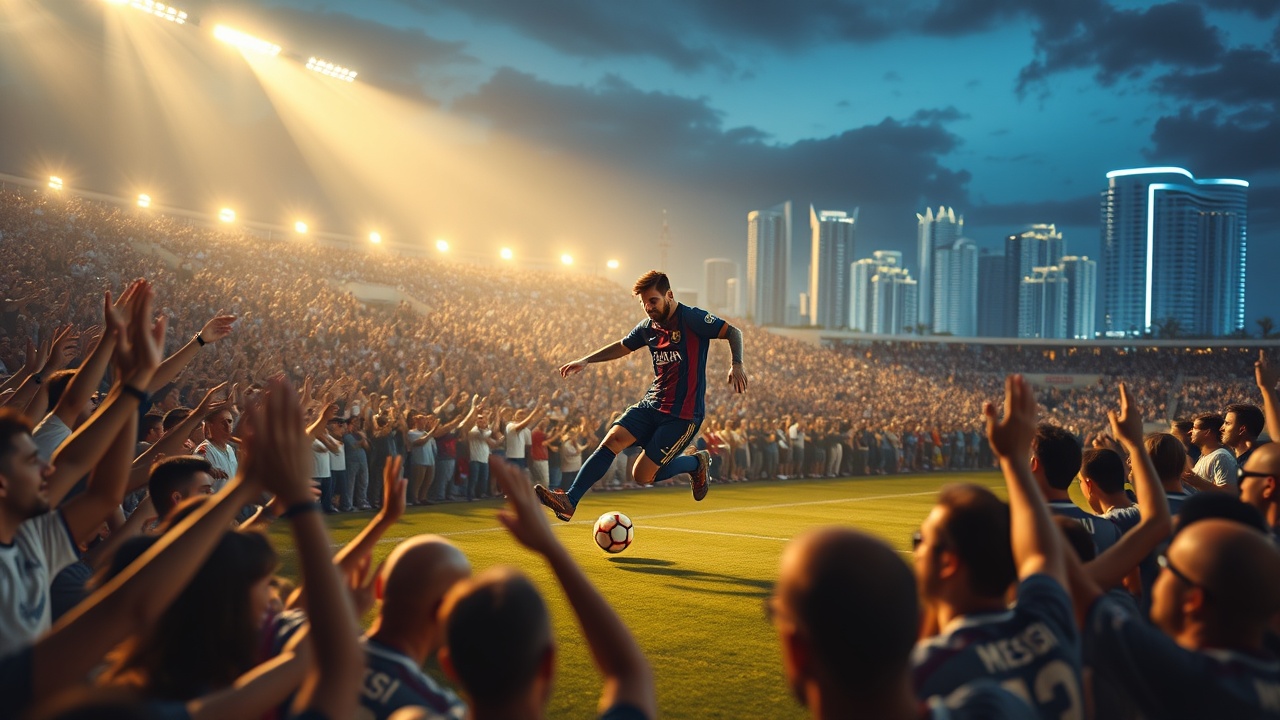Miami’s Soccer Ambitions
On a sultry summer night in Miami, the vibrant energy of the city resonates as Tony Montana, the iconic character from Scarface, declares his ambitions. “Me, I want what’s coming to me,” he states, to which his friend Manny replies with a probing question, leading Montana to conclude, “The world, Chico, and everything in it.” This sentiment of seizing opportunity parallels Miami’s current moment in the spotlight with the ongoing Club World Cup and the approaching preparations for the World Cup set to take place next year.
Celebrating the World Cup
The excitement was palpable at the Perez Art Museum on June 11 during the One Year Out celebration for the World Cup. Miami’s capacity to host such a monumental event was underscored by Latin Grammy winner and local celebrity Marc Anthony, who asserted the city’s ability to accommodate monumental sporting events, having previously hosted everything from Super Bowls to Formula 1 races. Still, the less favorable memories of the Copa America final last year lingered in the background.
Significance of the Club World Cup
At a recent gathering in Coral Gables, host committee representative Nicolo Zini highlighted the significance of the Club World Cup as a precursor to the bigger spectacle of the World Cup, stating, “It is not a minor selling point.” Notably, Miami was overlooked during the 1994 edition of the World Cup due to stadium unreliability, which resulted in the matches being diverted to Orlando.
The Messi Effect
Ever since the signing of football superstar Lionel Messi by Inter Miami, the city has felt an undeniable thrill of soccer fervor building up. A dramatic shift from the elegant Art Deco scenery of Miami Beach, the vibrant streets of Wynwood, famed for its first-ever graffiti museum, showcase a cultural vibrancy that now includes Messi as a potent local symbol. Murals of the football legend adorn neighborhood walls, reminding the city of his global impact.
Yet, Messi himself has chosen to train outside the bustling city in Fort Lauderdale, where residents camp out hoping for a glimpse of him. The expansive nature of the area means that one could traverse streets dominated by swarms of luxury vehicles and towering billboards without ever spotting the soccer icon.
Miami’s Sports Culture
Navigating Miami, known for its rich automotive culture, may feel akin to maneuvering through a complex Scalextric layout, where significant locations like Hard Rock Stadium boast an impressive parking capacity of over 26,000 spaces. This iconic venue is named after local NFL heroes and serves as a reminder of football’s place in Miami sports lore.
As the city finds itself hosting the Club World Cup amidst the exhilarating backdrop of Miami’s sports culture, the stadiums average impressive crowds, with 60,000 spectators filling seats, despite concerns over attendance figures. This kind of interest can largely be credited to the Messi phenomenon, particularly when Inter Miami opened the tournament against Al Ahly.
Future Aspirations
The excitement doesn’t end there. Matches like Bayern Munich versus Boca Juniors drew extensive attention, showcasing the fervent support of the Argentine community in the area. The impact of Real Madrid’s games also confirmed that Miami possesses a robust football market beyond just Messi’s allure. As FIFA President Gianni Infantino declared, Miami is a “city with Latin American passion that loves soccer.”
Wanting a more profound identity in the football world, Inter Miami’s aspirations reflect an ambition to compete broadly within the Americas, with its ownership eyeing participation in prestigious tournaments like the Copa Libertadores. The franchise has capitalized on its association with David Beckham, leveraging Messi’s star power to engage a global audience eager to purchase jerseys bearing his name. As the team’s revenues surged, demand for tickets reached unprecedented levels, prompting even Columbus Crew to relocate a home match to accommodate the influx of Inter Miami fans.
Looking Ahead
Looking ahead, the ongoing construction of Freedom Park, Inter Miami’s new home near Miami International Airport, will feature a modest capacity of 25,000 seats. This decision aligns with existing soccer-first stadiums across the country but raises questions amid the fervor Messi has fostered. As the Argentine superstar approaches the twilight of his career, Miami is left to ponder: what will remain of the soccer excitement he’s spurred when he eventually departs the pitch?
The question of sustainability hangs as Miami embraces its new identity as a football hub. The hope is built around cultivating a new generation of soccer enthusiasts who will continue to support the club and the sport long after the Messi era concludes, securing the city’s position not just as a momentary hotspot but as a lasting football capital of the United States.




